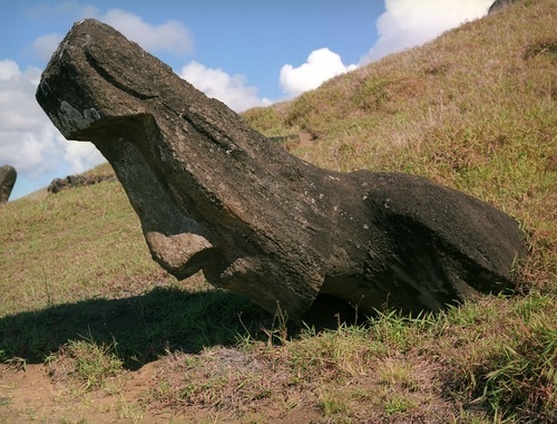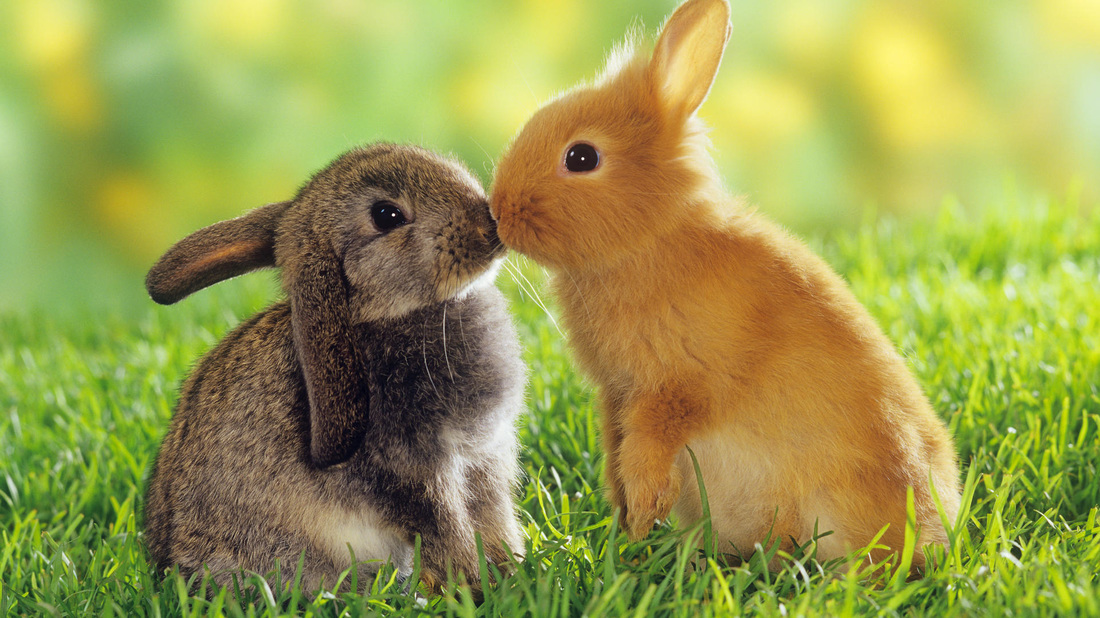 Rapa Nui (as the locals call it), one of the most remote inhabited islands in the world (the nearest inhabited land is Pitcairn Island, 1,289 mi away), is a Chilean island in the southeastern Pacific Ocean, at the southeastern most point of the Polynesian Triangle. I haven’t actually been there, but I’ve learned much about it in my Art History classes. The name, Easter Island was derived from its “discovery” by the Dutch explorer Jacob Roggeveen on Easter Sunday in 1722. This island used to be a subtropical paradise with diverse trees, birds, and sea life, but when the Western world found it, it was a wasteland with sand, withered grass, and burnt vegetation, and no creature larger than an insect. The overall picture is among the most extreme example of forest destruction anywhere in the world: the whole forest gone with most of its species extinct as they saw their complex society spiral into chaos and cannibalism . So, what happened? The Polynesians came over to this island sometime between 300-700 CE. When the first Polynesians settled, they prospered and multiplied in this fertile, abundant landscape. By year 1000, they began sculpting and erecting monumental statues of half figures known as moia on large stone platforms. The moia are believed to representation of sacred ancestral chiefs. Easter Island is famous for these 887 extant monumental statues. These statues were up to 65 feet tall and weighed up to 270 tons. With passing years, the statues and platforms became larger and larger, probably in an escalating spiral of one-upmanship to show wealth and power to rival clans. The native islanders who carved them used only stone hand chisels. While many teams worked on different statues at the same time, a single moai took a team of five or six men approximately a year to complete. Most of them were carved from a single quarry and then somehow transported as far as six miles. It is believed that the islanders cut down their trees to roll the statues to the coast. They also cut down trees to cook over fires and make boat for fishing. Over a few centuries the forest got smaller and smaller. They probably didn’t even notice and certainly didn’t plant enough new trees to replace their rate of production. With the loss of the trees, there was a sudden drop in the quantities of fish intake as the islanders lost the means to construct fishing vessels. This was followed by a decrease in the number birds as they lost their nesting sites or became extinct. It is around this time that many islanders moved to living in fortified caves and the first signs of warfare and cannibalism appear. Oral traditions of the islanders consist of translated phrases like, “the flesh of your mother sticks between my teeth.” (A Window to Worlds of Art by Robert Mansfield). So, how does this sad story relate to Easter or yoga? The Spring Equinox is celebrated on the first Sunday after the first full moon after the 20th of March. Many cultures marked the spring equinox by celebrating the resurrection of life after the desolation of winter. In Christianity, Easter celebrates the resurrection and rebirth of their savior, Jesus and the potential for all souls to be saved and reborn as well. Passover shares some of the springtime symbolism of rebirth as well. Passover celebrates the Biblical tale of the survival of the Jews during their captivity in Egypt, and their rebirth as a people as they escape slavery for a new life in the Promised Land. Eggs are also an obvious symbol of new life that comes with the arrival of spring. Rituals involving brightly painted eggs appear to have been common in many ancient religions. The word, "Eastre", originates from a Saxon goddess of fertility and spring. Long before the Christian Easter, people celebrated a spring festival by rejoicing over the rebirth of life in the fields and forests. The Easter Bunny was originally a hare, representing the excited behavior of hares during their spring mating season. The fifth Niyama, the 2nd Limb of Yoga Philosophy, is Isvarapranidhana, which is about celebration of the spiritual. It’s about surrendering to the higher power. In yoga, there is an underlying idea that something bigger, more profound and pure exists other than ourselves, our egos. This higher power has many different interpretations, or names, depending on your cultural background or preference: God, The Universe, The Divine Light Within, The Self, Unchanging Reality, The Teacher. The practice of Ishvarapranidhana therefore means that if we are able to completely surrender our individual ego identities to the higher power, then we will move beyond all feelings of separateness and become one with The Universe. Further, its about relaxing our expectations and bringing our attention and awareness to the big picture of celebrating the spiritual oneness of the world. According to Wayne Dyer’s book, Being in Balance, we can celebrate the spiritual by slowing down and take your time to be a relaxed person, being more contemplative, noticing the stars, clouds, rivers, animals, rainstorms. If the Easter islanders practiced Ishvarapranidhana, they could have protected, nourished, and multiplied the growth and abundance of the natural world. Often times we pride ourselves on being strong and domineering over others. We are used to our egos calling the shots, and giving us the belief that we are somehow in control of the universe. Becoming One is to surrender our own individual needs and desires to serve and accommodate our immediate community. You can make a conscious decision to look for the spiritual in everything and everyone that you encounter. You’ll see the energy vibrating from the tree or flower or creature and appreciate the miracle that is your environment, nurturing it through awareness and gardening. As a child, I remember the universal joy of seeing large ripe tomatoes and tall corn stalks growing in my mother’s garden.
0 Comments
Your comment will be posted after it is approved.
Leave a Reply. |
Hannah Faulkner
|























 RSS Feed
RSS Feed